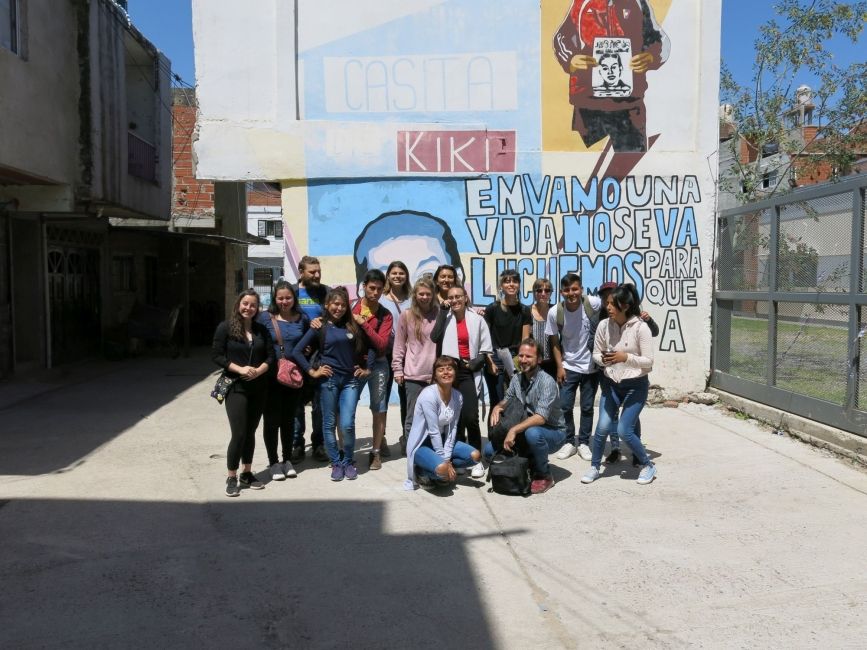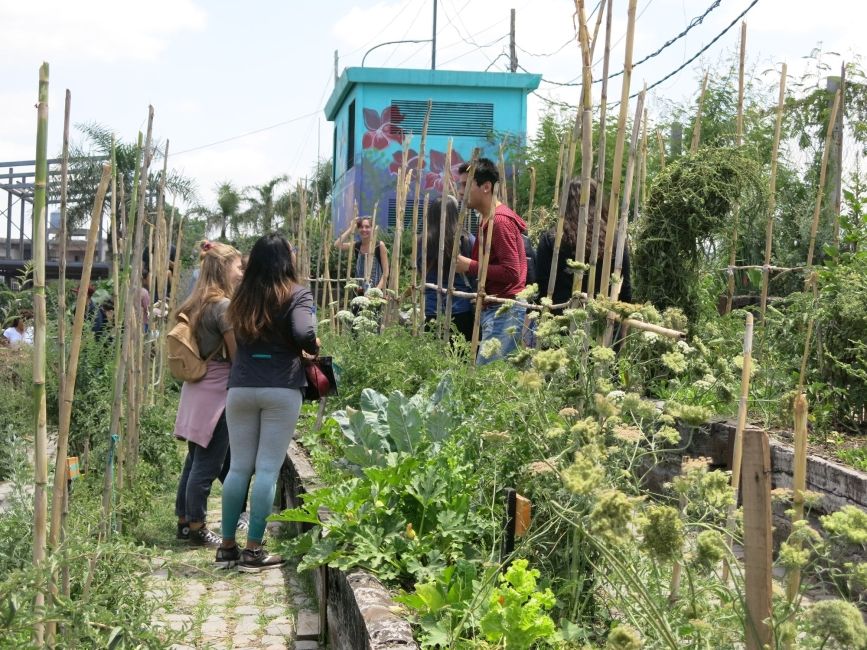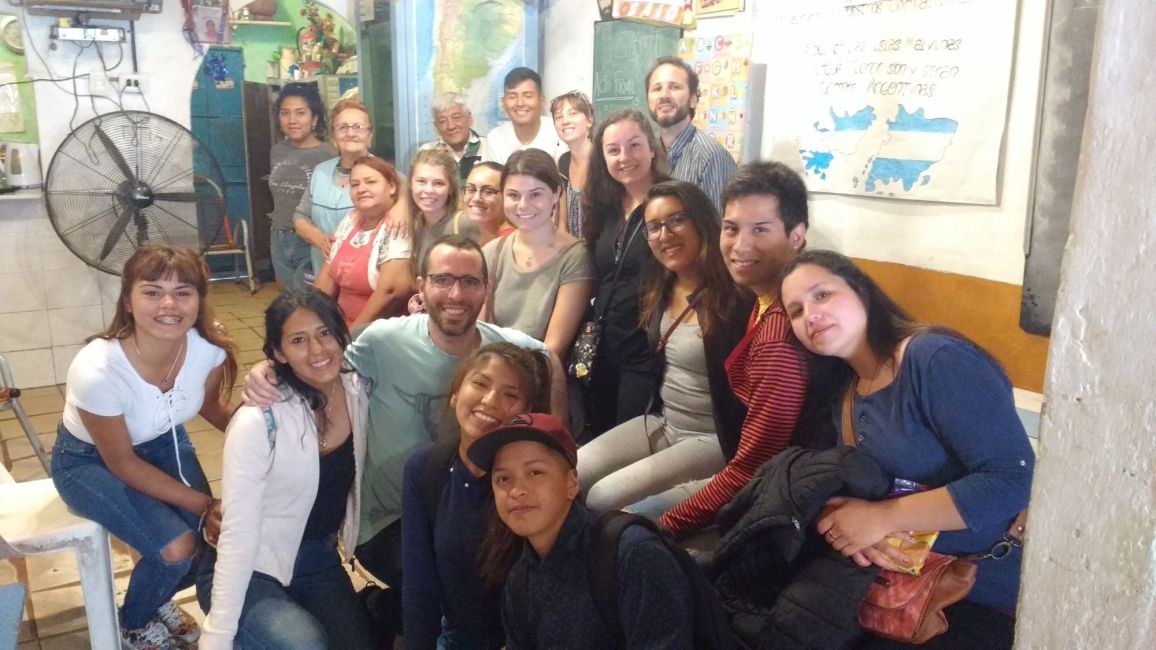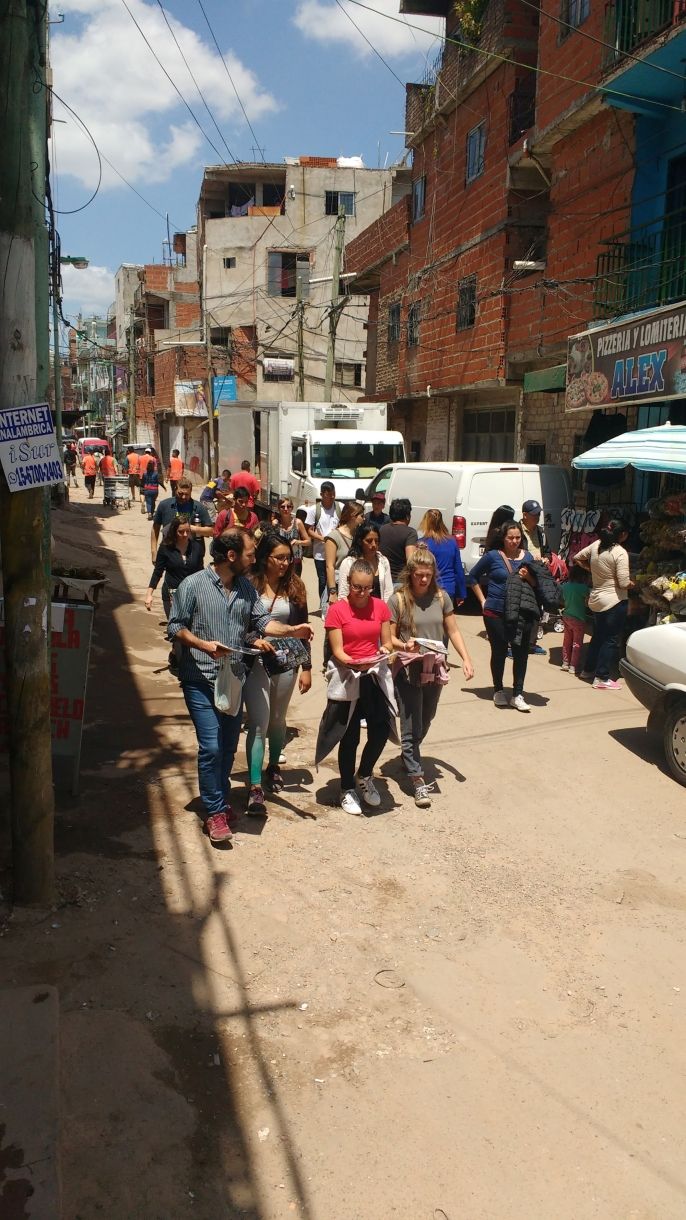Mapping bonds in Villa 20
By Professor Ezequiel Filgueira Risso and Professor Iván Greco
Last Friday, December 7th, students of the GI Environmental Issues & Sustainable Development course visited Villa 20, in the neighborhood of Villa Lugano in the south of City of Buenos Aires.
The visit took place within the scope of Plural Knowledge topics seen in the course. The idea of the visit was to see how public policies are informed by the bottom up initiative of a group of local young students, that call themselves “30 green Manzanas (apples)” (“apple” equals to block in Spanish, in reference to the blocks that constitute the slum neighborhood). This group identifies socio-environmental issues in a participatory manner, and then address these issues in processes of constant interaction with social actors in the area.
The participatory mapping was presented to GI students as a powerful tool for the visualization of aspects of the neighborhood and as an instrument for the construction of the social bond, both among the members of the 30 green apples and with the local community in general.
After an initial round of presentation between both groups, while we were sharing exquisite mates, we all went to walk along one of the main streets of the neighborhood. Here students were able to observe different aspects related to the mapping mentioned above. One by one, some of the topics to be addressed were pointed out: deficient waste management, precarious electrical power lines and lack of green spaces. Likewise, the already existing mitigation initiatives conducted mainly by the group of 30 green apples were shared with the students: Thematic murals; coordination with local community dinners for the removal of used fried oil (to prevent it from going to the rain drainage and collapse it) and the creation of a big urban garden. With these actions in progress, some of the manifestations of the commitment that this local group has with its own neighborhood were shared. The observation exercise also created a momentum for popping up students' excellent questions, where their critical eye was at hand to identify aspects related to the socio-environmental problems of the place. This created a perfect interaction between both groups.
The end was quite emotional: a reflection at the Urban Garden was shared (along with more mates!). cell phones numbers, social network accounts and more than one hug were exchanged: the bond was already mapped out
Related Posts
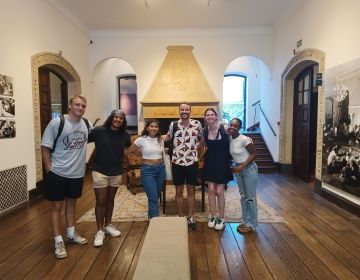
Building transformational leaders
By Professor Bruno Nunes During this Spring block II, in the Transformational Leadership Across Culture course we’ve explored the different political, economic and social leaders and leadership styles, skills, traits... keep reading
Argentine sobremesa
There’s a chalkboard in my host mom’s kitchen that for the past few months has read, “La vida es más linda cuando la compartimos”. I’ve done a lot of reflecting... keep reading
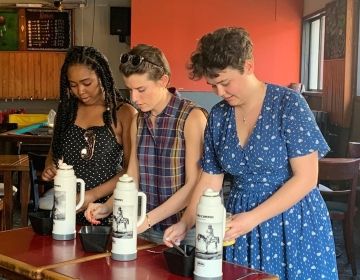
Spanish and Mate: making new friends in Buenos Aires
By Open Campus Student, Kelsey Lynn Dearing CIEE Buenos Aires offers students the opportunity of meeting locals, Porteños, at Mate Club. Every Tuesday, Thursday and Saturday Argentineans seeking for new... keep reading
